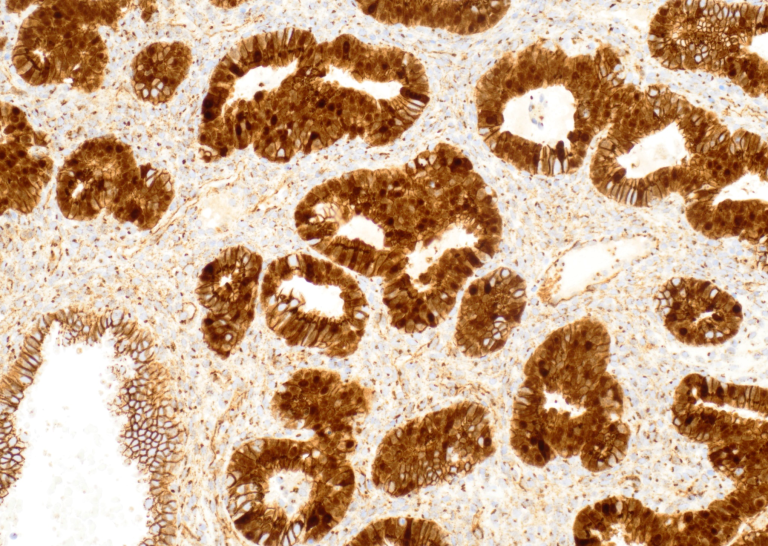The diagnosis of endometrial precancer (endometrioid intraepithelial neoplasia/atypical hyperplasia) remains a challenging area, with variable criteria and inadequate consensus, potentially leading to under/overtreatment. In systematic investigations, we identified a novel panel of 3 biomarkers: Pax2, Pten, and β-catenin that enhances diagnostic accuracy when used together. Please see The American Journal of Surgical Pathology (2022).
In other research studies, we have used barcoded massively-parallel sequencing to identify mutations in biopsies and track their origin and allelic frequency progression. We are characterizing serial genomic alterations along the precancer/cancer continuum in individual women. Preliminary findings indicate that genomic analysis of biopsies could have diagnostic value, complementary to a standard histopathological review of tissue sections. Please see Journal of Pathology (2021).
Endometrial polyps are unusual lesions that are paradoxical in that they are considered benign, but yet are well-known to be strongly associated with endometrial cancer. We recently demonstrated that EMPs harbor a high incidence of mutations in classic endometrial cancer drivers. Based on these findings, we proposed a model where the association between EMPs and endometrial cancer is explained by the age-related accumulation of endometrial cancer drivers in a protected environment that—unlike normal endometrium—is not subject to cyclical shedding. Please see Modern Pathology (2022).

β-catenin pinpoints endometrial precancer